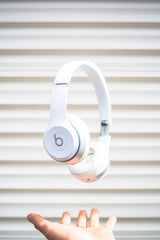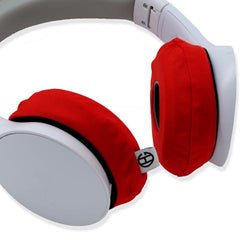Extreme Ear Pain in Cold Weather

We’ve all suffered from the effects of a cold biting wind on our ears: the painful sting that sends our lobes bright red leaving the cartilage sensitive and painful. Extreme ear pain in cold weather is often due to a decrease in outdoor temperature but it could also be the sign of something more serious and so it’s always worth visiting a healthcare professional if you’re concerned.
Why Do My Ears Hurt in Cold Weather?
The medical term for ear pain is otalgia and it can be quite common when you’re exposed to cold weather. One website describes the pain as lasting anywhere from 15 minutes to 60 minutes + but that the pain disappears once the ear becomes warmer. It’s the type of cold weather ear pain that some of us might associate with a Christmas shopping trip: darting into the warmth of a shop after spending time in sub-zero temperatures. Within moments of being in a heated space (better still a pub with an open fire), any pain in the ears and any in the fingers and toes should begin to disappear. For some people, the pain can be described as sharp. For others, it might be a deep ache, that’s according to Dr Christopher Change who is an Ear, Nose and Throat Consultant in Virginia.
He goes on to say that the pain is due to sensory nerve over-stimulation caused by the cold weather. It’s similar to the ‘brain freeze’ you might experience when eating ice cream.
There’s no fat covering our ears so they’re incredibly vulnerable to the cold. Once our body realises that we’re cooling down, it restricts blood flood from our extremities meaning the ears along with the fingers, nose and toes are often the first to feel the chill factor. It does this to keep our vital organs warm.
Can the Cold Weather Give Me an Ear Infection?
Cold air might make your ears feel like ice blocks but it CAN’T give you an ear infection. An ear infection is exactly that — an infection of the ear caused either by bacteria or a virus rather than a strong northwesterly breeze. But according to the Mid-Maryland Ear, Nose and Throat Specialists, cold air can dry the throat leading to coughing, congestion and ‘nasal secretions’. This can then lead to a bacterial respiratory infection which can then lead to an ear infection.
Effects of Cold Weather on the Ears?
Along with the pain in your ear, you may also notice some other ear-related issues in the colder weather. Cold weather can actually make the ear produce more wax which then hardens inside the ear canal causing discomfort and hearing loss.
If you suffer from tinnitus, then you may find that the cold weather can make symptoms worse. Tinnitus is often associated as a ringing in the ears but it can also be a buzzing, hissing, clicking or roaring sound, too.
There’s a condition known as exostosis that can affect some people in the colder weather. More commonly known as Surfer’s Ear, exostosis is when bone growths begin forming in the ear and can lead to hearing loss. The reason it’s called surfer’s ear is that cold water surfers tend to suffer from it as they’re regularly in the kind of cold and wet environments that encourage the growths. The hearing loss is reversible with a simple operation, but it’s far better to try and prevent exostosis from forming in the first place.
How Can You Prevent Extreme Ear Pain in Cold Weather?

Wear a Hat
It sounds obvious BUT wearing a hat is one of the easiest and most convenient ways of keeping your ears warm during the winter. Mountain Warehouse recommends picking a hat that’s based on the shape of your face, and it also suggests buying your hat based on when and where you’ll be wearing it. No one hat will suit every situation so think about what you need it for: working outdoors, long coastal walks, climbing, running, skiing, daily chores outside, popping to the shops, school run etc.
An ill-fitting hat will ride up and probably need to be constantly pulled down so get one that fits the shape of your head. If your ears are especially susceptible to the cold, then we’d recommend getting a trapper hat — one with ear flaps.
Make Sure Your Hair and Ears are Dry Before You Leave the House
How many of us have left the house — even in winter — with wet hair? You’re probably familiar with the old wives tale that going outside with damp hair will lead to a cold. It’s not true. You can’t catch a cold from anything but a virus BUT as we’ve mentioned above you could be at risk of Surfer’s Ear. Heaving a wet head can also make you feel the cold more, too. You can also damage your hair if temperatures are particularly low.
Wear EarSnugz
We’re obviously big fans of wearing headphones during exercise. Sweat-proof headphone covers not only stop moisture damaging your headphones, but they can also help to prevent exercise-induced acne and middle-ear infections caused by sweat.
Do you know what else we’re big fans of?
Being outside in the cold weather with our headphones. That’s why we’re really excited to announce the launch of EarSnugz: hypoallergenic, thermal grade and super soft fabric blend earmuffs that you ADD to your own headphones.
They’re teddy bear soft and toasty warm, and they’ll not only keep your headphone cushions comfortable against your ear but they’ll help protect them from the cold winter air, too.
One size fits all headphones. The headphone cut out slot means it doesn’t matter whether they’re wired or wireless cans.
We believe, too, not just in looking after our ears but in caring for mental health, too, and that’s why £1 from each sale goes to the Mental Health Foundation.
Keep an Eye on the Temperature and Dress Accordingly
We expect winter to be cold but it’s easy to be caught out when the temperature really drops. Understanding the weather can be tough especially in places like the UK where you can get 4 seasons in a single afternoon. Having a general idea of what’s coming, however, is a great headstart to keeping yourself warm.
One thing that’s worth listening out for is the wind-chill factor.
They use ‘wind speeds and humidity to assess how the human body actually feels temperature’.
The actual temperature may be 0 degrees Celsius but the wind-chill factor means it could feel as cold a -6 degrees. The stronger the wind the faster the air cools our skin which makes ‘the surrounding air feel colder than it is.’
Extreme ear pain in the cold weather is often just the reaction of our sensitive ears to the winter weather. It can exacerbate existing conditions, too, like tinnitus. The best way to help avoid it is to wear a hat or to wear earmuffs. If you enjoy listening to music when you’re out and about, then EarSnugz — earmuffs for headphones — are ideal.
If the ear pain is particularly painful or if you’re concerned at how regularly you’re suffering, then you should consult a medical practitioner who’ll be able to advise you.







